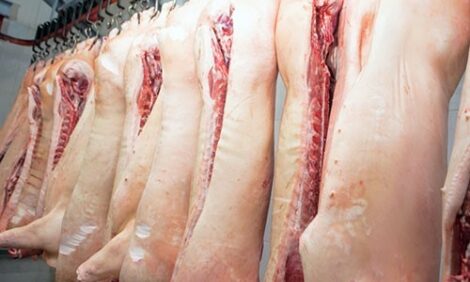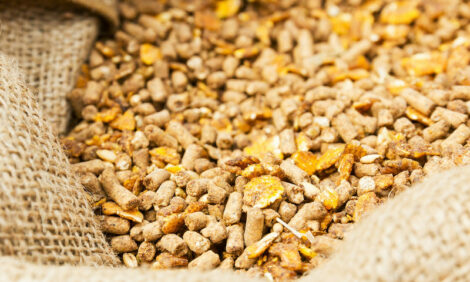



Rate of PCV2 recombination not widely recognised
An interview with Meggan Bandrick, DVM, PhD Associate Director Global Biologics Research Zoetis.Recombination of porcine circovirus type 2 (PCV2) is a known phenomenon in the research arena. Is there awareness of PCV2 recombination in the field?
MB: In the field we’re finding awareness of recombination, but the extent of recombination isn’t fully realised.
What is the rate of PCV2 recombination?
MB: In one study of PCV2 viruses, 33 percent of 898 sequences from 32 countries were found to be PCV2 recombinants.1 In another, smaller study, the percentage of PCV2 recombinants was a similar 34 percent.2
How does the rate of PCV2 recombination compare with other viruses that affect swine?
MB: As an example, let’s consider influenza viruses, for which recombination is generally considered to be rare.3 In a study of 3,815 human and swine influenza virus gene segments, only 1 percent were recombinants.4 From what we’ve seen, PCV2 recombination appears to occur at a much higher rate compared to flu viruses. I should note that flu viruses are able to reassort, but PCV2 viruses cannot.
How does recombination occur and how does that differ from reassortment?
MB: Recombination occurs when two or more PCV2 viruses infect the same single cell. Say you’ve got PCV2a and PCV2d in the same cell. They swap genetic material and you get a recombinant - a child with genetic bits of both parent viruses.
Reassortment occurs when segments of a virus genome are exchanged. PCV2 doesn’t have a segmented genome and that’s why it can’t reassort. Influenza viruses can reassort because their genomes are segmented.
What PCV2 strains are found in recombinants?
MB: They’re usually commonly circulating PCV2 viruses - PCV2a, PCV2b and PCV2d, which is the most predominant PCV2 strain now in the US.5
But do the recombinants cause clinical disease?
MB: It appears so. In one study, PCV2a/PCV2d recombinants were in samples from pigs with wasting, characteristic of PCV2 disease.6 In another study with PCV2a/PCV2b recombinants, samples were from diseased and dead pigs.7
Do commonly used diagnostic tests identify PCV2 recombinants?
MB: Currently they don’t. The technology needed to identify recombinants is still primarily limited to research facilities.
Most PCV2 vaccines are based on PCV2a. They’ve provided some cross-protection against other genotypes, but do they protect against recombinants?
MB: Not necessarily. Vaccine failures associated with antigenic changes in PCV2 have been reported.8,9,10 Seemingly minor variations in the capsid protein - the virus part recognised by the immune system - can allow some of the new PCV2 viruses to escape the pig’s response to vaccination.11
Let’s say a pig has a PCV2a/PCV2b or PCV2a/PCV2d recombinant virus and has received a PCV2a vaccine. The immune system will recognize the PCV2a capsid but may not fully recognise PCV2b or PCV2d because it hasn’t been primed by vaccination to recognise them. This could leave the pig vulnerable to clinical disease.
What vaccine strategy then is likely to protect pigs against PCV2 recombinants?
MB: The PCV2a vaccines have done a great job helping the pork industry manage PCV2 disease, but we now have a genetic gap between PCV2a-based vaccines and circulating viruses.
A vaccine with broader antigenic coverage may help fill that gap, which was the impetus for development of Fostera® Gold PCV MH. It’s the only PCV2 vaccine with two genotypes - PCV2a and PCV2b. We’ve demonstrated it protects against PCV2a, PCV2b and PCV2d as well as Mycoplasma hyopneumoniae.12 In addition, studies comparing epitopes among vaccines and field strains, including recombinants, have demonstrated it should provide broader epitopic coverage.13,14
Do you have a take-home message for producers regarding PCV2 protection?
MB: It would be worthwhile to rethink the PCV2 vaccination strategy. PCV2 is an evolving virus. We’ve already got an alphabet soup of strains, ranging from PCV2a through PCV2h! To stay ahead of this virus, broader antigenic coverage needs to be considered.
| References | ||||
|---|---|---|---|---|
| 1 Franzo G, et al. | ||||
| (2016) | Phylodynamic analysis of porcine circovirus type 2 reveals global waves of emerging genotypes and the circulation of recombinant forms.. Mol Phylogenet Evol. | 100:269-280. | ||
| 2 Neira V, et al. | ||||
| (2017) | Genetic analysis of porcine circovirus type 2 from pigs affected with PMWS in Chile reveals intergenotypic recombination.. Virol J. | 14(191). | ||
| 3 Shao W, et al. | ||||
| (2017) | Evolution of Influenza A Virus by Mutation and Re-Assortment. Int J Mol Sci. | Aug;18(8):1650. | ||
| 4 He C-Q, et al. | ||||
| (2008) | Homologous recombination evidence in human and swine influenza A viruses.. Virol. | Oct;380(1):12-20. | ||
| 5 Franzo G, et al. | ||||
| Phylodynamic analysis of porcine circovirus type 2. | ||||
| 6 Neira V, et al. | ||||
| Genetic analysis of porcine circovirus type 2. | ||||
| 7 Huang Y, et al. | ||||
| (2013) | Evidence for different patterns of natural inter-genotype recombination between two PCV2 parental strains in the field.. Virus Res | Jul;175(1):78-86. | ||
| 8 Karuppannan A, et al. | ||||
| (2017) | Porcine Circovirus Type 2 (PCV2) Vaccines in the Context of Current Molecular Epidemiology.. Viruses. | May; 9(5):99. | ||
| 9 Salgado R, et al. | ||||
| (2014) | Identification of an Emergent Porcine Circovirus-2 in Vaccinated Pigs from a Brazilian Farm during a Postweaning Multisystemic Wasting Syndrome Outbreak. Genome Announc. | Mar-Apr; 2(2):e0016314. | ||
| 10 Xiao C-T, et al. | ||||
| (2012) | Complete Genome Sequence of a Novel Porcine Circovirus Type 2b Variant Present in Cases of Vaccine Failures in the United States.. J Virol. | Nov;86(22):12469. | ||
| 11 Karuppannan A, et al. | ||||
| Porcine Circovirus Type 2 (PCV2) Vaccines | ||||
| 12 Data on file, | ||||
| Study Report No. 16PRGBIO-01-01, Zoetis LLC. | ||||
| 13 Data on file, | ||||
| Study Report Zoetis WO1, EpiCC PCV2 Analysis, Zoetis LLC. | ||||
| 14 Data on file, | ||||
| Study Report Zoetis W02, EpiCC PCV2 Analysis, Zoetis LLC. |








